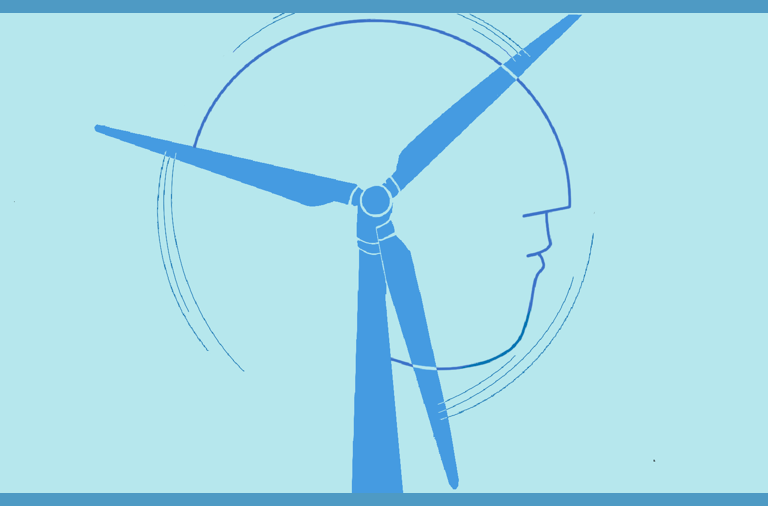In this post I present actual Norwegian natural gas production, status on reserves, the development in discoveries and what this results for Norwegian Petroleum Directorate (NPD) and my expectations for the future delivery potential for Norwegian natural gas.
Norway, after Russia, has been and is the EU’s second biggest supplier of natural gas.
Included is also a brief look at developments in actual consumption and production of natural gas in the EU 28 (the 28 members of the European Union).
- NPD revised down their band for future delivery potential by about 10 Gcm/a (Bcm/a) and moved the start of decline one year forward relative to their forecast last year.
- I now expect the Norwegian delivery potential for natural gas relative to 2014/2015 to decline by more than 40% by 2025.
- Europe will increasingly have to rely on natural gas imports from more distant sources and should by now have implemented policies for the role natural gas will have in its future energy mix.
This post is an update to my post in 2014 looking at the status as of end 2013.
Figure 1: The chart above shows development in natural gas exports from production installations on the Norwegian Continental Shelf (NCS) as reported by the Norwegian Petroleum Directorate (NPD) from 1996 to 2014 and with my forecast for delivery potential towards 2025.
The chart also shows the NPD forecasts; green line upper projection, orange line lower projection. NPD’s central projection is in about the middle of the green and orange lines.
The black dotted line is the forecast from the International Energy Agency’s World Energy Outlook 2012 (IEA WEO 2012).
Numbers are believed to be gross exports from the production installations and thus not adjusted for “shrinkage” from Natural Gas Liquids (NGL) extraction, primarily at Kollsnes and Kårstø. The NGL extraction reduces total sales gas volumes with around 4% relative to what is exported from the producing installations.
Numbers in Gcm, Giga cubic meters (Gcm = Bcm; Billion cubic meters)
My forecast and NPD’s forecast at end 2014 are basically identical towards the end of this decade, but differs about the timing for the start of the decline and how steep this will become as from early next decade. My forecast is also tested versus the Reserves over Production (R/P) ratio as of end 2014, refer also to figure 2.
At end 2014 the NPD projection of Norwegian natural gas supply potential towards 2025 was revised down.
NPD’s central projection is in about the middle of the green and orange lines. Note the span of uncertainties in the NPD’s forecast.
Beyond 2025 Troll and Snøhvit (LNG; Liquified Natural Gas)) are likely to be the backbones of Norwegian natural gas supplies.
Norwegian natural gas deliveries had a high in 2012 and were lower in 2013 and 2014.
I prefer to use the term delivery potential as there may be bilateral departures from contracts dictated by swings in demand, and the winter’s weather is the big moderator for gas demand. The Troll field is operated as a swing producer to take the brunt of swings from buyers’ demand.
Start up of Aasta Hansteen has been pushed back to H2 2018 and its profitability is linked to developments of other discoveries in the Norwegian Sea, like Linnorm, Victoria and Zidane (total EUR of 70 Gcm [Bcm]).
The Forecast expressed by the R/P Ratio
The R/P (Reserves divided with Production) ratio for a specified year provides a snapshot for how many years the estimated reserves at the end of that specified year theoretically can be sustained.
The R/P snapshot also serves as a valuable test (as close to a verification the most recent data allows) on the realism of the forecast in figure 1.
Figure 2: The chart above with the stacked boxes shows the R/P ratio for the fields with meaningful natural gas extraction and the rest have been lumped together with others. The sum of the areas of the boxes represents total EUR for NCS as of the end of 2014. The chart also shows NPD’s recent forecast towards 2019, my forecast towards 2025 and IEA WEO’s 2012 forecast towards 2035.
The area for the boxes in figure 2 represents NPD’s estimates of estimated recoverable reserves (EUR). The height of the boxes represents the extraction level of 2014 and the length how many years this extraction level theoretically could be sustained.
With time the area of the boxes, their heights and lengths, will shrink reflecting the depletion of the reservoirs.
The R/P approach shows that for all practical matters NPD’s and my forecast (I refer to potential) towards 2019 are identical.
The chart illustrates that beyond 2019 there is a rapidly growing divergence between the IEA WEO 2012’s and my forecasts.
As of now the reserves and production data from NPD lends no support for IEA’s expectations for the level of Norwegian natural gas deliveries towards 2035.
Development and Status of Norwegian Natural Gas Reserves
Figure 3: The figure shows the history and the status of the total natural gas discoveries by vintage (stacked columns) since exploration started on the NCS and as of the end of 2014. The rose colored portion of the columns show what has been recovered, sold and delivered. The red portion of the columns is total estimated remaining reserves. The yellow portion of the columns shows reserves in discoveries under evaluation. Furthermore, in the chart is also shown annual production of natural gas since production began in the late 1970s (thick black line).
The chart also includes a table that shows the year of discovery for fields estimated to hold more than 100 Giga cubic meters (Gcm = Bcm; Billion cubic meters) of recoverable natural gas.
The chart illustrates that the biggest discoveries were made early in the exploration phase and since the mid 1990’s more natural gas was produced than discovered. Many of the recent discoveries are relatively small, in deep water and thus requires a high gas price to become sanctioned for commercial developments.
The chart illustrates that Norwegian natural gas extraction has been in liquidation since the late 1990’s.
Figure 4: The chart above shows NCS discoveries in various evaluation phases, their estimated recoverable natural gas reserves [left hand scale] versus year of discovery. In the chart is also shown development in the nominal oil price (Brent, black line and right hand scale).
Green circles: Resource Category 4F, in planning phase.
Yellow circles: Resource Category 5F, development likely, but not clarified.
Pink circles: Resource Category 7F, not evaluated.
NOTE; For reasons of scaling Johan Sverdrup (which is sanctioned, is by NPD estimated to contain about 11 Gcm natural gas) and Johan Castberg in the Barents Sea and above 72 degrees North (both Category 4F) are not shown.
The chart illustrates that a higher oil price stimulated another exploration cycle. This resulted in several small gas discoveries offshore and in deep water, making for challenging commercial developments.
Figure 5: The chart above shows NCS discoveries, their estimated recoverable crude oil reserve versus natural gas reserves and their evaluation status. It is the total petroleum reserves, their location and potential for coordination [including use of existing infrastructure] that form the economic basis for any developments.
Due to scaling the chart does not include Johan Sverdrup and Johan Castberg (Barents Sea).
Common features of the discoveries under evaluation are:
- They are too small to have a meaningful impact on the forecast for the potential of total Norwegian natural gas supplies towards 2025
- Some of these are time critical, meaning that any cost benefits from the use of existing infrastructure expires as these reach their end of their economic life and are closed down. To make these discoveries commercially viable post such close downs require primarily a higher price.
One way to describe these discoveries is that as time goes, these risks becoming commercially stranded.
A Brief Look at (EU + Norway)’s actual Natural Gas Supplies and Consumption
With the prospect of a near future decline in Norwegian natural gas supplies and indigenous European supplies in general decline, Europe needs a plan about natural gas role in its future energy mix.
Figure 6: The stacked areas show actual and forecast consumption of natural gas for EU (EU and Norway has been totaled), its production (blue area), pipelined imports (red area) and Liquified Natural Gas (LNG) imports (yellow area).
Pipelined imports are primarily from Russia and North Africa (Algeria and Libya). In recent years, most LNG has come from Qatar, Algeria and Nigeria.
The forecast for EU’s natural gas consumption towards 2025 (dotted black line) is from US Energy Information Administration’s World Energy Outlook 2013 (EIA WEO 2013).
As of now it does not seem likely that European natural gas consumption towards 2025 will follow the trajectory presented in the EIA IEO (EIA IEO; [US] Energy Information Administration, International Energy Outlook) 2013 reference case.
EU + Norway natural gas supplies peaked in 2004 and EUs natural gas consumption has declined about 100 Gcm (about 20%) from its likely peak.
Inasmuch historical data on European pipelined and LNG imports provide any guidance for the capacities of these import systems, it now appears that by early next decade (in about 5 years) the capacities of the import systems are in much need for expansions to sustain present European natural gas consumption levels.
To sustain present levels of natural gas consumption in Europe a projected 100 – 150 Gcm/a additional supplies are needed by 2025. As of now and given the time frame involved, there are few suppliers in Europe’s proximity that have the potential to provide meaningful supplies to help close an emerging and growing gap in natural gas supplies.
There is a saying that the one who owns the gold makes the rules.
In Europe when it comes to natural gas, and staying with the “gold” theme, the reality of the near future may be that the one who owns the natural gas makes the rules.
In a future post I plan to take a closer look on developments in the European natural gas market and how Norwegian natural gas has served the U.K. and mainland Europe markets.
—
“The greatest barrier to discovery is not ignorance, it is the illusion of knowledge.”
– Daniel Boorstin






